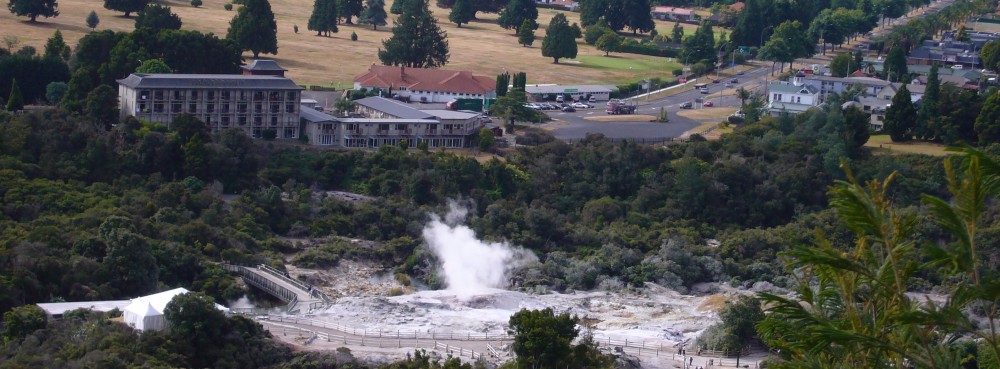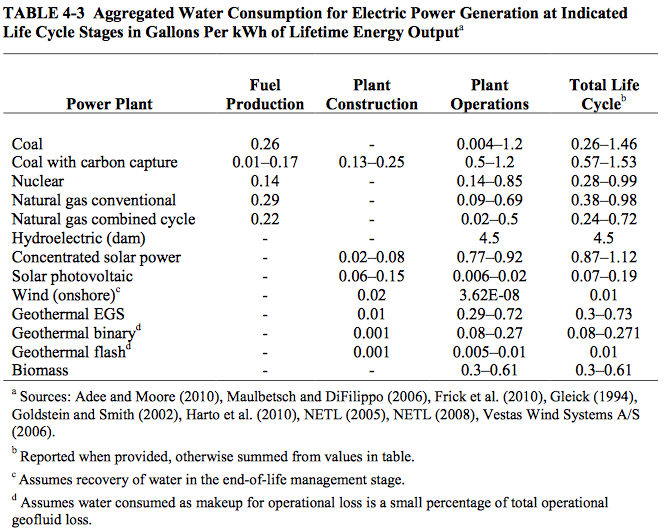Using geothermal energy to produce electric power has many benefits, including low emission rates, high capacity factors, low cost, and many more. One of the key benefits of using geothermal energy is that geothermal resources require a much smaller amount of water use than many other sources.
When analyzing the water use of different systems, it is necessary to look at the whole life-cycle of the plant. There is water used in several steps to harnessing geothermal energy, so it is extremely important that we look at the entire process. According to Argonne National Laboratory, “a recent life cycle analysis of water requirements for geothermal electricity production found geothermal technologies to be low relative to most conventional generation technologies.” However, many geothermal resources available to us are in locations with very limited water supply.
It is also important to consider different types of geothermal power plants, because they all use water for different purposes.
Conventional Hydrothermal Binary System
In hydrothermal binary systems, energy can be extracted from resources with moderate temperatures (between 74°C and 182°C ). In these systems, geothermal fluid is pumped from a well through a heat exchanger, which heats up a working fluid with a low boiling point (often isobutane or isopentane).This heat exchange causes the working fluid to turn to vapor, which then drives a turbine. This vapor then goes through a condenser, and is reused, making this a closed-loop system.
Conventional Hydrothermal Flash System
Hydrothermal flash systems use hydrothermal fluids above 182°C. This fluid is quickly “flashed” or vaporized from the well by a dramatic decrease in pressure to a tank, and the vapor is used to drive a turbine, which drives a generator and produces electricity. The liquid that remains in the tank will be vaporized again to produce as much electricity as possible. This type of system is an open loop system, so the vapor is generally released to atmosphere and the condensed liquid is injected back into the well.
Enhanced Geothermal System
Enhanced geothermal systems use more water than conventional geothermal systems, because they require water to be injected into the ground to reopen fractures (or create new ones) and create permeability. These systems are extremely useful and can expand the electricity-generating capacity of geothermal resources. Enhanced geothermal systems rely on binary system technologies once the fractures are created.
A study was done by NREL to assess how much water was being consumed by each of these categories, and the results can be seen below.
Another study was done by Argonne National Laboratory to compare water use for different types of electricity generation technologies. This can be seen below.
As can be seen in the above table, there are sources of electricity generation that use less water during the life cycle. However, it is clear that geothermal power plants are very competitive when it comes to their water usage.
Primary Author: Jessica Ross
Edited by: Allison Scoular
Sources:
Water Resource Assessment of Geothermal Resources and Water Use in Geopressured Geothermal Systems. Argonne National Laboratory, Sept. 2011. Web. <http://www1.eere.energy.gov/geothermal/pdfs/geothermal_water_assessment_use.pdf>.
“Water Use in the Development and Operation of Geothermal Power Plants.” Argonne National Laboratories, Sept. 2010. Web. <http://www1.eere.energy.gov/geothermal/pdfs/geothermal_water_use_draft.pdf>.


